Holy smoke: Tom Dixon turns to the elements for Caesarstone pop-up

A flat synthetic stone surface is not the easiest of products to present imaginatively at a trade show. So it’s a testament to the talent of the team at quartz surface manufacturer Caesarstone that the global company’s recent series of impressively scaled exhibitions in Milan have all been showstoppers.
‘Engagement with architects and interior design is a major growth channel for Caesarstone,’ explains the brand’s CEO, Yos Shiran. ‘We need to create opportunities for them to experience and use the product in new and creative ways.’ Last year, Philippe Malouin installed a playful series of swings and planters made from the material within the neoclassical Palazzo Serbelloni; in 2014, Raw-Edges’ whimsical ‘Islands’ kitchen served up canapés and candyfloss to guests in Palazzo Clerici; and in 2013, Nendo created two large-scale installations, including a peaceful ‘stone garden’ in the courtyard at Palazzo Crivelli.
Now, promising to top all of these performances is Tom Dixon, who has partnered with the brand for this year’s Salone on a series of four kitchens that will be serving up themed cuisine at Rotonda della Besana, a deconsecrated church surrounded by a peaceful cloistered garden behind Milan’s Tribunale. ‘As it’s Eurocucina this year, I thought we might as well get cooking,’ says Dixon, who is no stranger to throwing ambitious culinary events; his own restaurant, Dock Kitchen, at his London HQ, has been running since 2009. ‘I’ve taken the restaurant a couple of times to Milan and it takes a lot of energy, so it’s good to have a partner who’s going to do it with us.’
Having already debuted one of the four Caesarstone kitchens at the Interior Design Show in Toronto, Dixon’s Salone showcase will see all four kitchens serving a temporary restaurant in the church’s domed centre. Made using Caesarstone quartz, each kitchen will boast an experimental design based around one of the four elements associated with medieval alchemy – water, fire, earth and air. ‘I like the idea of alchemy as a metaphor for design – where you’re turning base materials into gold – but in a kitchen it’s particularly relevant,’ he says, reflecting on his elemental theme. ‘You’re boiling stuff, charring stuff, there’s extraction going on, air’s being pumped into egg whites to make meringues, and everything ultimately comes from the earth. I like multiple reasons for using analogies.’
Four kitchens, four courses and four dining rooms spread out across the church’s cruciform layout will create a format that Dixon likens to a ‘global speed dating’ exercise, encouraging guests of all nationalities to mingle. ‘Each course will be served by a different kitchen in a different dining room, so you’ll have one course in one dining room before moving on to the next, where you’ll be confronted with a new guest,’ he explains. The menu comes courtesy of Francesca Sarti, of food design studio Arabeschi di Latte, and will feature dishes in keeping with the elemental theme. Planned delicacies include shaved ice drinks prepared in the water kitchen, marshmallows and candyfloss in the air kitchen, chicken cooked under a brick in the earth kitchen, and charred breads toasted in the fire kitchen. ‘Although, we’ve got to be a bit careful with flames inside a listed building,’ says Dixon.
Fitted out with Electrolux’s Grand Cuisine cooking systems, the monumental kitchens will be realised in colour palettes that match their individual theme, much like giant Caesarstone sample boards, each with their own ‘little quirks’, as Dixon puts it. The grey and white water kitchen, for instance, has jagged edges inspired by frozen ice, while the earth kitchen recalls ancient Roman aqueducts in earthy tones. In the fire kitchen, blackened beams and hints of gold are paired with black and dark grey quartz surfaces, and in the air kitchen, thin, vertically placed Caesarstone slabs and cut-outs will serve as cooking counters.
‘Caesarstone is usually just used to top things off, but by using it as structure and support material, we’ve come up with some slightly different conclusions,’ says Dixon. ‘They’re quite confident interventions in the room. I think all too often kitchens are kind of ghettoised to the corner with just a little breakfast bar – I don’t like the way kitchens always hug the walls.’
The new 2016 Tom Dixon collection of furniture and accessories will also be displayed across the space. This year’s pieces, spread across five ranges, have a special focus on raw materials, something that’s always been at the heart of Dixon’s design work. ‘What made me do design in the first place was that direct contact with stuff, and the idea of being able to transform something that’s formless into something desirable, something I still enjoy doing. It never loses its magic.’
The creation of a complete immersive experience in order to exhibit new work is, of course, nothing new for Dixon – Multiplex, his recent multi-sensory temporary department store at the Old Selfridges Hotel in London, was a great success, as was his series of shoppable installations and light shows built within an abandoned theatre during last year’s Salone. This natural knack for showmanship, he says, can be traced back to his love of music and performance.‘I love the idea that you’re demonstrating the stuff in action rather than it just sitting on a pedestal,’ he adds.
‘People travel a long way to Milan and they’re looking for sensation and excitement. A lot of people say how much better it used to be, but you’ve got to look on the positive side and what it means for our business; which is that because there’s more general interest and because people are seeing our stage as a place they can market a car or face cream, it’s good for all designers. So why not pander to that sensation-seeking and do something which will test out a few theories, a few ideas and entertain people? Maybe in the long run, facing up to the fact that this has partly become an entertainment industry is something worth looking at.’
As originally featured in the May 2016 edition of Wallpaper* (W*206)

Dixon's restaurant is split into four zones. Pictured clockwise from top-left:
Air: Thin, vertically placed Caesarstone slabs and cut-outs will act as cooking counters for the dessert bar, where treats include meringue, whipped cream, marshmallows and candyfloss.
Fire: Blackened beams and hints of gold are paired with black and dark grey quartz surfaces, and food served will include charred breads and smoked cheese.
Earth: The earth kitchen recalls ancient Roman aqueducts in earthy tones, with ingredients – largely pulled from the ground – cooked under bricks or in hay boxes.
Water: The grey and white water kitchen has jagged edges inspired by frozen ice, and delicacies include shaved ice drinks, hot steaming broths and frozen vegetables

Chicken cooked under a brick in the earth kitchen
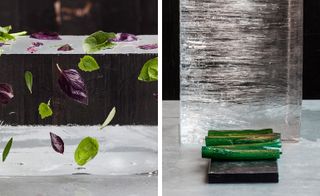
Frozen vegetables and frozen herbs, both in the water kitchen

Dixon comments on the project, ‘They’re quite confident interventions in the room. I think all too often kitchens are kind of ghettoised to the corner.' 'I don’t like the way kitchens always hug the walls’. Pictured: the Earth Kitchen

Tom Dixon's fire kitchen. Courtesy Caesarstone
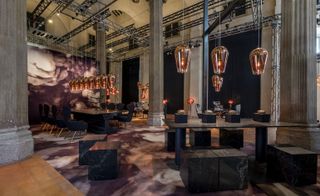
Dixon adds, ‘I like the idea of alchemy as a metaphor for design – where you’re turning base materials into gold – but in a kitchen it’s particularly relevant’. Pictured: The Fire Kitchen

The beautiful grounds of the Rotonda Della Besana
INFORMATION
’The Restaurant’ by Caesarstone & Tom Dixon will be at MUBA from 12–17 April. For more information, visit Ceasarstone’s website and Tom Dixon’s website
Photography: Danilo Scarpati
ADDRESS
MUBA
via Enrico Besana 12
Milan
Wallpaper* Newsletter
Receive our daily digest of inspiration, escapism and design stories from around the world direct to your inbox.
Ali Morris is a UK-based editor, writer and creative consultant specialising in design, interiors and architecture. In her 16 years as a design writer, Ali has travelled the world, crafting articles about creative projects, products, places and people for titles such as Dezeen, Wallpaper* and Kinfolk.
-
 10 books culture editor Hannah Silver recommends this winter
10 books culture editor Hannah Silver recommends this winterLacking inspiration over what to read next? Wallpaper* culture editor, Hannah Silver, shares her favourite books
By Hannah Silver Published
-
 Midtown Manhattan restaurant Ánimo! takes its cues from Mexican morning rituals
Midtown Manhattan restaurant Ánimo! takes its cues from Mexican morning ritualsDesigner Jordana Maisie creates a minimalistic yet referential setting for Ánimo!
By Adrian Madlener Published
-
 First look: Leica Cine Play 1 brings premium style and tech to the world of home cinema
First look: Leica Cine Play 1 brings premium style and tech to the world of home cinemaLeica compresses its meticulous optic know-how into the ultra-compact Cine Play 1 4K projector
By Jonathan Bell Published
-
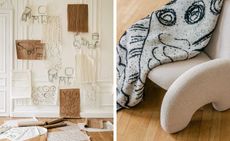 Faye Toogood brings new life to Matisse’s legacy
Faye Toogood brings new life to Matisse’s legacyMilan Design Week 2023: tapped by Maison Matisse, the London-based designer has taken inspiration from the French master’s forms to create a collection of heirloom-worthy objects
By Sam Rogers Published
-
 Prada Frames 2023: Milan programme announced
Prada Frames 2023: Milan programme announcedProgramme announced for Prada Frames 2023 at Milan Design Week, the annual symposium curated by Formafantasma at Luigi Caccia Dominioni's Teatro Filodrammatici from 17 to 19 April
By Rosa Bertoli Last updated
-
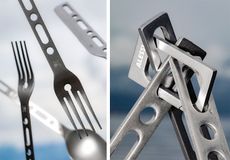 Alessi Occasional Objects: Virgil Abloh’s take on cutlery
Alessi Occasional Objects: Virgil Abloh’s take on cutleryBest Cross Pollination: Alessi's cutlery by the late designer Virgil Abloh, in collaboration with his London studio Alaska Alaska, is awarded at the Wallpaper* Design Awards 2023
By Rosa Bertoli Published
-
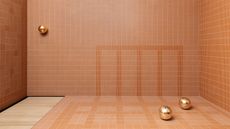 Salone del Mobile 2023: highlights from Milan Design Week
Salone del Mobile 2023: highlights from Milan Design WeekIn pictures: our highlights from Milan Design Week, held during the 61st Salone del Mobile 2023 (18-23 April)
By Rosa Bertoli Last updated
-
 Tom Dixon marks his studio's 20 years with a show of design experiments
Tom Dixon marks his studio's 20 years with a show of design experimentsMushroom, cork, steel coral and more: Tom Dixon showcases an overview of his design experiments as he celebrates his practice's 20 years
By Rosa Bertoli Last updated
-
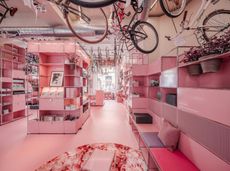 USM launches blushing pink limited edition of its modular furniture
USM launches blushing pink limited edition of its modular furnitureFollowing an installation during Milan Design Week 2022, USM launches a new pink limited edition of its Haller range
By Rosa Bertoli Last updated
-
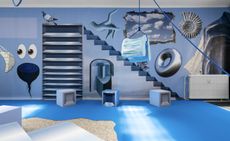 ‘You don't want space; you want to fill it’: Milan exhibition
‘You don't want space; you want to fill it’: Milan exhibitionMaking its debut during Milan Design Week 2022 at Marsèll Paradise, a new exhibition by Matylda Krzykowski, explores how we approach the space we live in (until 15 July 2022)
By Cristina Kiran Piotti Last updated
-
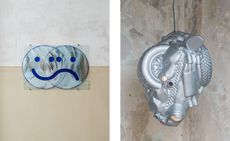 Men’s mental health takes centre stage at an art and design exhibition by Tableau
Men’s mental health takes centre stage at an art and design exhibition by Tableau‘Confessions’, which travels to Copenhagen’s 3 Days of Design following its debut at Milan Design Week 2022, features commissioned work by 14 male artists, designers and architects, reflecting on toxic masculinity, vulnerability and mental health
By TF Chan Last updated